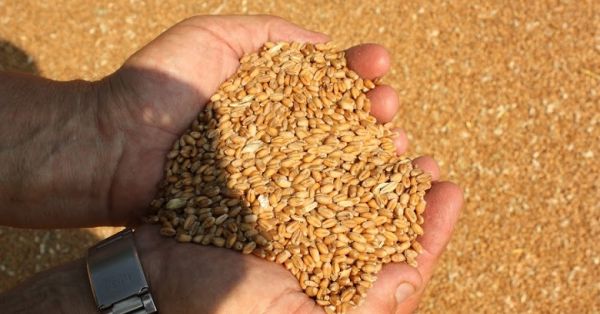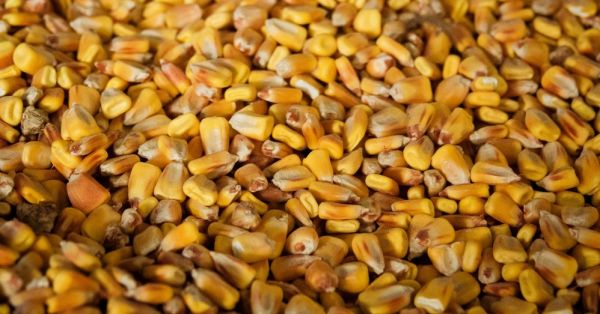To learn more about agribusiness in Ukraine, follow us on Facebook, on our channel in Telegram, and subscribe to our newsletter.
How to Make Data-Driven Decisions in Grain Trading
Every grain trader in the CIS market pays a lot of attention to monitoring prices, studying forecasts, trends and checking counterparties when making decisions.
However, not all companies properly handle internal business information that is generated in the course of the company's operations.
And this data is no less important for business and, if handled correctly, can provide a competitive advantage for the company and become an additional driver of growth.
Data Driven in Grain Trading
In grain trading, where price volatility has always been present, information and awareness play a key role. Until recently, up-to-date data and high-quality analytics on weather, crop yields, energy price fluctuations, demand for agricultural commodities, and transport infrastructure conditions provided a significant competitive advantage for multinational trading companies, which could afford to maintain large data centres and analytical departments.
In recent decades, with the advent of the Internet and the rapid development of information technology, the monopoly of multinational companies on information has collapsed.
Today, any grain market player, either a producer or a trading company, regardless of its size, has access to all the information about the market that is necessary for making business decisions — what to sow, purchase or hold, buy or sell, to whom and on what terms.
Increased awareness and literacy have led to reduced margins — grain market participants have started making more balanced and thoughtful decisions and there is less and less room for intermediaries.
READ MORE: What Grain Trading Position Is and How One Manages It
In these conditions, traders have started paying more attention to working with internal business information, seeing it as an opportunity to optimize the business.
Companies are collecting large amounts of data, analysing it and using it to make balanced managerial decisions in order to reduce costs, get rid of inefficient cases and improve staff productivity.
Such an approach to business management has been known in the world since the early 90s under the name Data Driven. Its fundamental difference from the classical approach is that decisions are made on the basis of data, not intuition.
Trends in use and how to implement
The largest multinational companies are setting the trend in grain trading for data driven. They are using modern technologies such as the Internet of Things (IoT), blockchain and machine learning to collect, store and analyse information about their activities throughout the entire supply chain, from the purchase of goods at the farm to their storage at the elevator, through processing, shipment and transshipment.
Thanks to the operational reporting, analytics, modelling, pattern identification and forecasting, all of the company's business activities are transparent and controlled to the maximum extent possible. The management has a complete picture of the state of the business at the moment, which gives an opportunity to elaborate development strategy and carry out crisis management more effectively.
In the CIS today, only large companies use this method. Smaller companies do not use their data well enough for development.
Their only source of information is the financial reports drafted by the accounting department at the end of the reporting period. These documents can bring unpleasant surprises to the management, when the results are not as originally planned, but there is no way to impact the situation.
READ MORE: The World Is Trending Towards the Simplest Possible Grain Trading Management Systems
At the same time, full-fledged management accounting, which can become the main source of operational information to improve the quality of management and business performance, is not performed.
There are different reasons for this — some simply lack the resources to organize the process of data collection, others consider it unnecessary, some do not know how to organize it properly, others are unaware of the value of this information.

Meanwhile, you do not need to be a multinational trader with billions of dollars for technology budgets to use data driven.
All it takes is a few simple steps:
- Conduct an enterprise audit. Understand what business information is already available, what information is being generated but not collected in a quality way.
- Resolve the issue of centralised data storage. It won't make any sense if all information is scattered, you can use Google spreadsheets or file exchanges.
- Set up information collection by setting up management accounting. If a company is small, one person may be responsible for accounting, if the company is bigger, each person is responsible for his or her own area of work. The main requirement for employees in this process is that the data is accurate and up to date so that they can be trusted without any doubt.
- Start doing operational analytics of the collected data, identify patterns, monitor KPIs of employees and processes, develop standard operational reports that will show the vector of business development. Ideally, an in-house financial analyst should be hired to do this, but this work can also be done by an accountant. When an automation system is implemented, all of this data can be obtained automatically.
The list of metrics that grain traders should monitor depends on the business model of the company — whether it is a small middleman, whether it has its own production or buys something on the side, on what basis it trades, how it delivers products, and so on. It has to be defined individually.
Here is just a general basic list of such metrics for the average company:
- Trade turnover control (trading KPI (buying and selling), counterparty relationship history, KPI execution (signing, confirmation, exaction), trade position).
- Trade execution control (counterparty risk control, ongoing contract execution and deviations).
- Cash flow and risk control (transaction hedging, projected cash flow, MtM or valuation to market, receivables and its structure).
- Efficiency control (project PNL, plan/fact, budgeting, cost analysis, error control).
- Operational efficiency control (speed of transactions execution).
If a company controls these indicators, it can grow at the expense of improving the quality of the trading department, cleaning up the counterparty portfolio, improving customer service, optimising the business model and choosing the most effecient trading strategy.
Dmitry Mikhalchuk, founder and SEO-optimizer of GrainTrack





